To celebrate another Brazilian match in the worldcup 2014, this Tuesday, a recipe I adapted from the original so everyone can make at home a delicious canapé. Similar to Arabic Falafel invented in the Middle East, acarajé means ‘eating ball of fire’ due to the method of preparation, the dish got its name. The Arabs brought this delicacy to Africa in several raids during the seventh to the nineteenth centuries. Dried Beans and Chickpeas Falafel were alternated by local black-eye beans in Africa. This traditional dish was brought to Bahia by the African slaves to Brazil in colonial times They are sold under strict policies by the street sellers, the Bahianas who wear their customary white long and embroidered garments and headdresses.
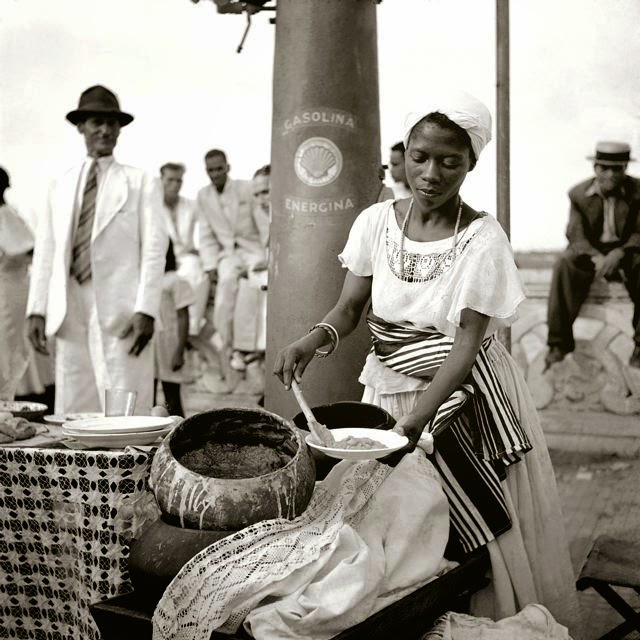 |
| Tabuleiro da Bahiana in the streets of Salvador – Bahiana’s board, ph: Pierre Verger |
Acarajé and vatapá, are sold among other delicacies by the Bahianas (women from Bahia) in the street of Salvador, and it’s the main attraction on their board (tabuleiro). According to history, the recipe although not secret, can not be modified. Another dish steeped in local religion, culture and with historical references.
The Bahianas, who sell acarajé in the streets of Salvador, have been given national heritage status. Bahia Acarajé is recognised together with traditional knowledge, production methods and marketing of food called Bahia, made with palm oil, especially acarajé. The production and consumption of food Bahianas Acarajé or Baianas board (tabuleiro da Baiana) are deeply rooted in everyday Bahia’s population.
This recipe is based on the original with a few alterations.
Acarajé & Vatapa
Makes: about 15-20 canapes ( 1 dessertspoon) per Acaraje
Ingredients
Acarajé dough:
• 1 large onions onion
• 1/2kg black-eyed beans
• Salt to taste
• oil to deep fry – ideally, half flavourless oil and half palm oil.
If you can’t find palm oil, use flavourless oil only.
Vatapá:
• 150 g of roasted cashew nuts
• 150g roasted peanuts
•150g dried shrimp
•150g of fresh shrimp
• 50g freshly grated coconut or shop bought
• 5 tablespoons of palm oil, or flavourless oil
• 1 big tomato, skinned, de-seeded
• 1/2 onion, finely diced
• a handful of herbs: chives, cilantro, parsley to taste , finely chopped
• 1/2 bell pepper, finely diced
• 1/2 cup shrimp broth
• 100ml of coconut milk
• 100ml milk
Method
Acarajé dough:
1. In a bowl place the beans in water for 24 hours
2. The skins will separate from the grain
3. Remove the floating skins and blend with the
chopped onion until smooth. Salt to taste
4. Pour into another bowl and continue whisking well, tapping the help of a wooden spoon, it will
stay fluffy
5. Fry them in half oil palm and and half oil
6. Drain on kitchen towel. Reserve.
Vatapá:
1. Dice the bread and let the pieces soften in milk and coconut milk
2. Then whisk this mixture in a blender and set aside
3. Blend together the peanut, cashew nuts, shrimp and the coconut. add to bread mix and shrimp
(fish) broth and blend again.
4. Beat well and season to taste
5. In a medium size pan, 5 spoons of palm oil (or flavorless oil), finely diced
onions, tomato, bell peppers cook for 5 minutes
6. Place the nut and bread mixture stirring until the bottom of the pan can be seen when traced
it with a wooden spoon.
7. Add the herbs. Reserve.
To serve:
1. Break the acarajés in half and fill with Vatapá
2. Preferably leave to fry the acarajés before serving

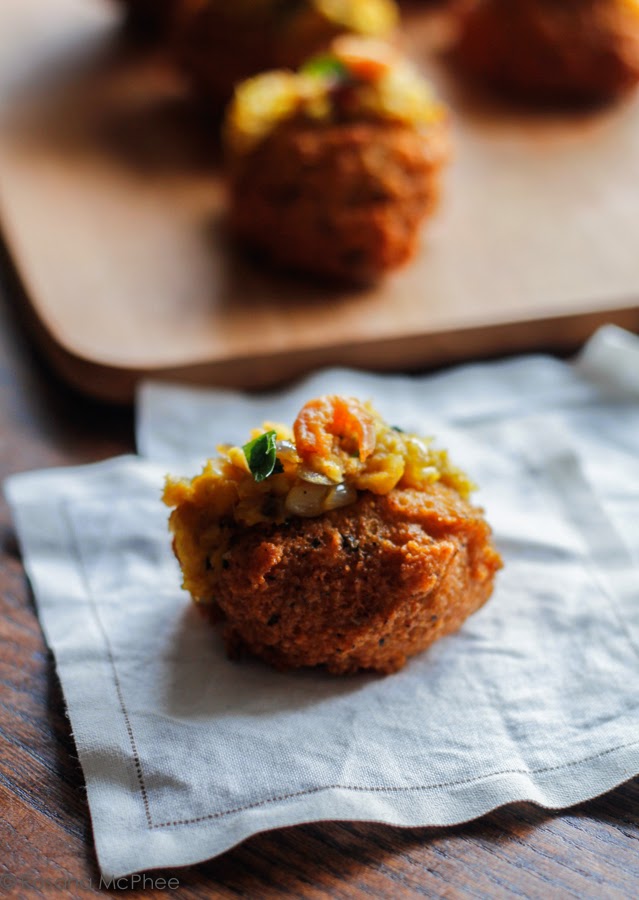
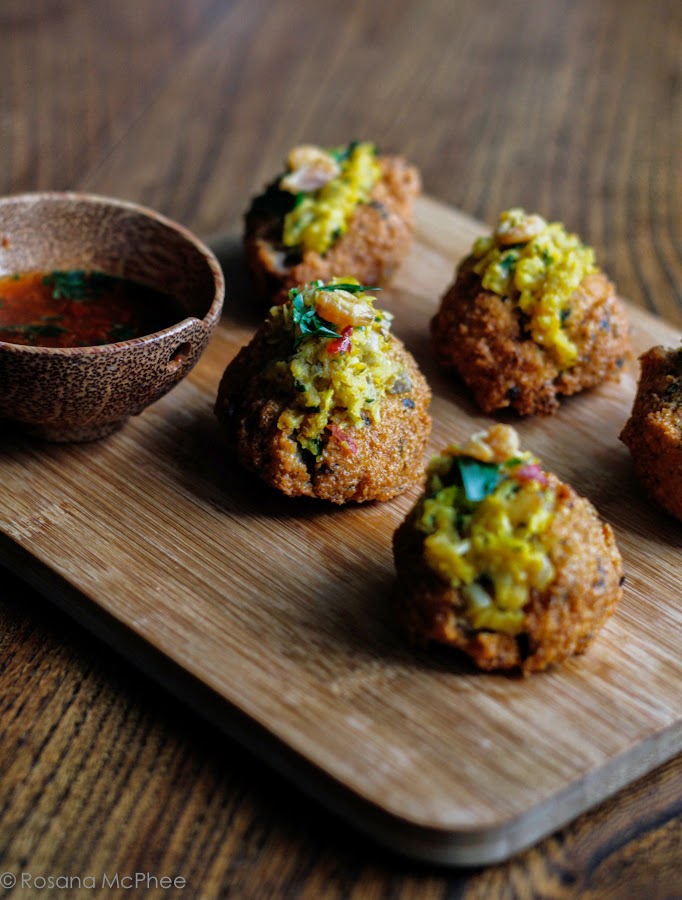

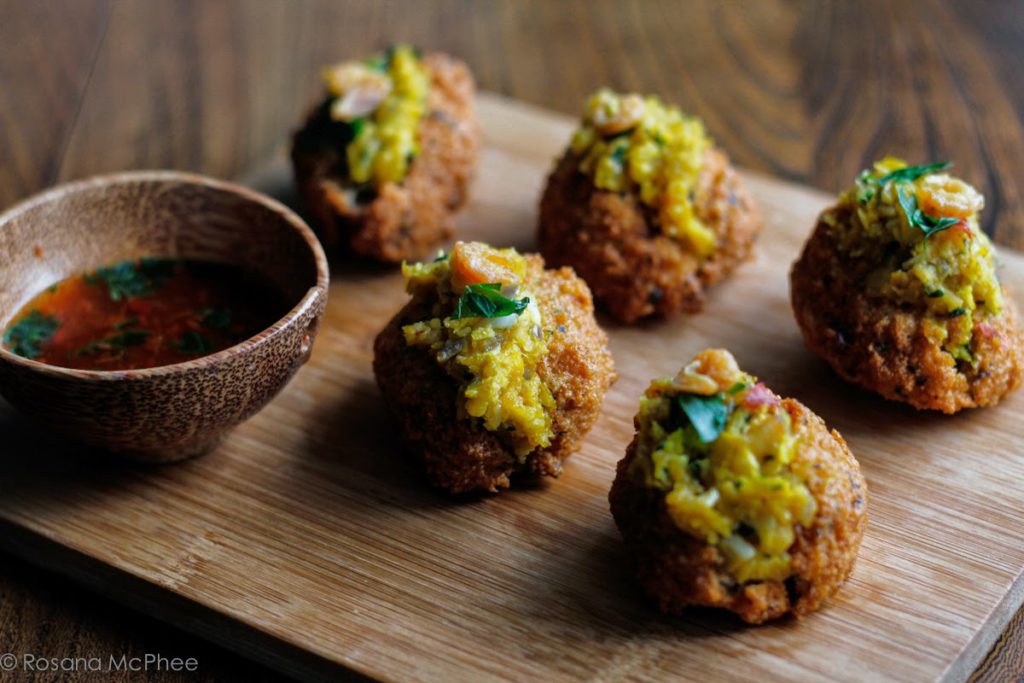
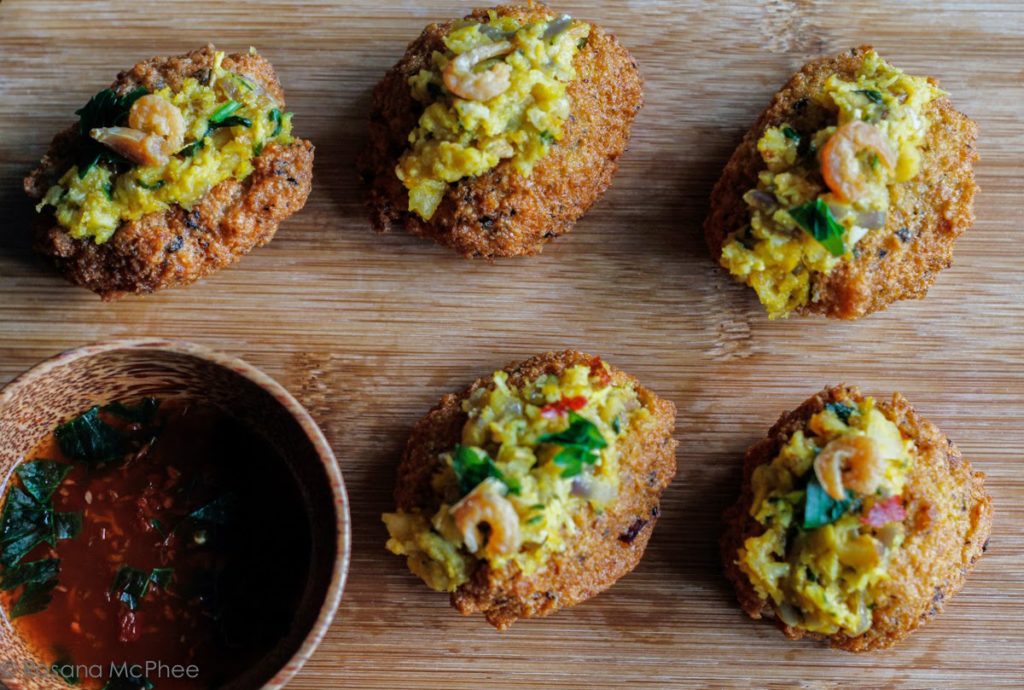
I always love your blog!
Thanks Lisa! Glad you love it 😉
Nice to know the history of this. Am about to create a version on my blog too. It's all going Brazilian!!